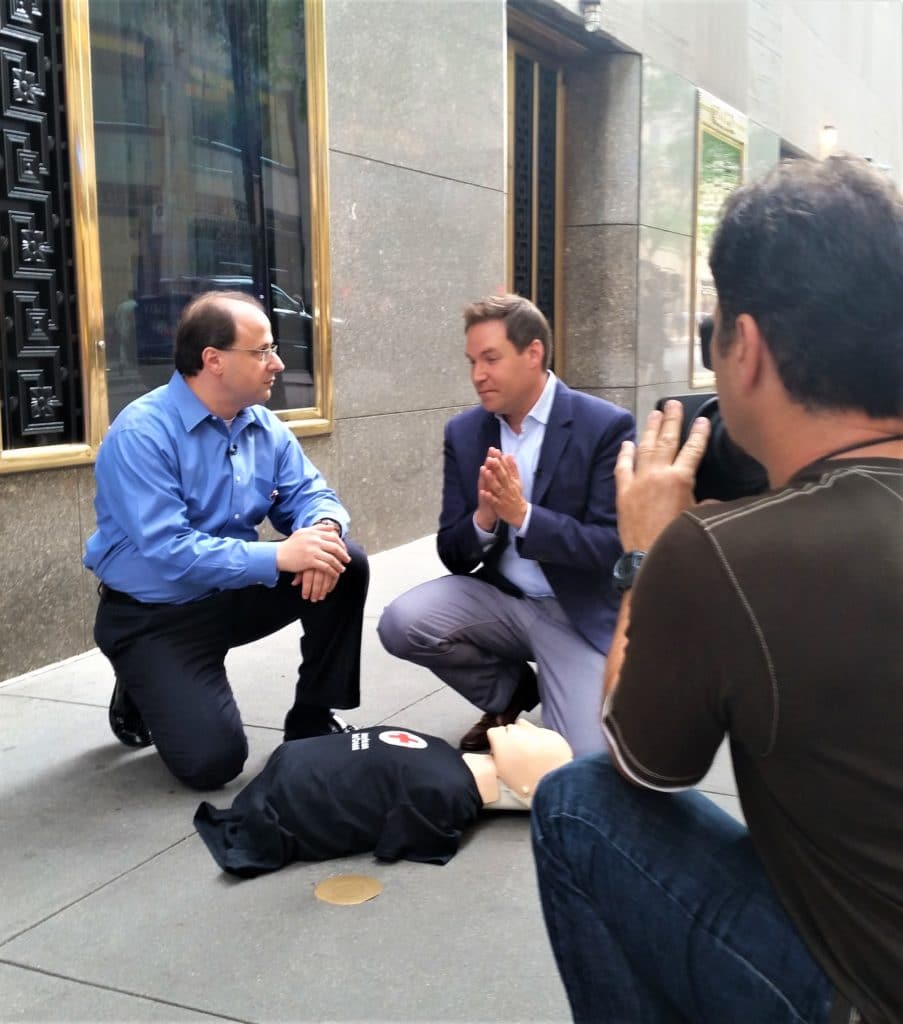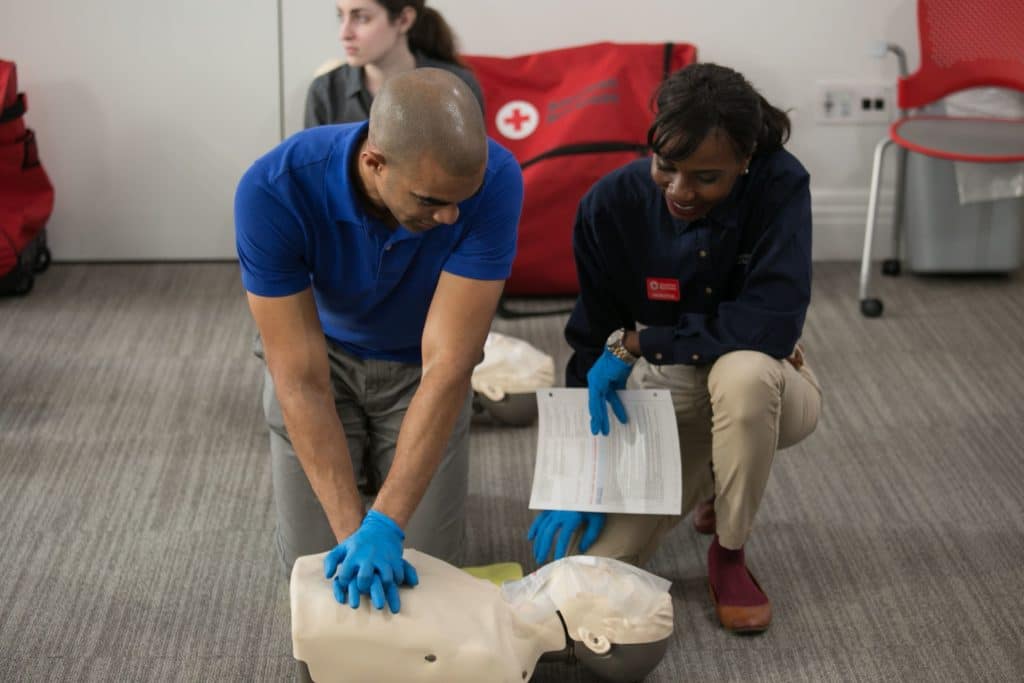David Markenson, MD, serves as the Chief Medical Officer for the Red Cross Training Services Division. In his 25 years as a physician, he’s seen how CPR and AEDs can save lives.
Tell us about the first time you performed CPR.
I was 15 years old and a summer lifeguard when someone went into cardiac arrest at the pool. The whole team went into response mode and activated our pool emergency plan. The front desk called 9-1-1; I started performing CPR; and the team got the AED. We did exactly as we were trained.
When working in hospital did you have experience with bystander CPR/AED?
One summer when I was running the pediatric emergency department in Westchester, a child fell down going to second base in a Little League game. He was unconscious and wasn’t breathing. Two parents and a coach started CPR; others got an AED. After we stabilized him in the ER, we looked at the AED data and discovered that he was born with an abnormal cardiac rhythm. The boy got an implantable defibrillator and went home. That was one of four saves in two weeks from “regular people” doing CPR and using an AED, all of them on children.
How have things changed in the 25 years that you’ve been a physician?
I now see AEDs everywhere. Even if you haven’t been trained, if you see someone suddenly collapse, I urge you to grab an AED off the wall and turn it on. It will tell you what to do, and it won’t go off unless the person needs a shock. Apps are another great tool. Even if you’ve been trained in CPR, turning on the steps in the Red Cross First Aid app can give you that extra bit of confidence and direction. Lastly, call 9-1-1 as they can guide you through CPR and first aid.
Why is CPR + AED Awareness Week important?
This week gives us the opportunity to remind people that anyone can save a life. People are afraid of not knowing what to do or doing the wrong thing. If you are trained by the Red Cross, you will always know what to do in an emergency.
Okay, but it’s still scary. Can’t I just call 9-1-1?
Calling 9-1-1 is always an excellent first step. The dispatcher can help guide initial actions and send help. In cardiac arrest, the person’s heart has stopped, so even though starting CPR can be scary, doing anything is an improvement and might save their life. If you are untrained or unwilling to give breaths, doing compressions is a great first step. But to give the person the best chance, compressions with breaths are the choice, so taking a CPR course is a great thing to do.


